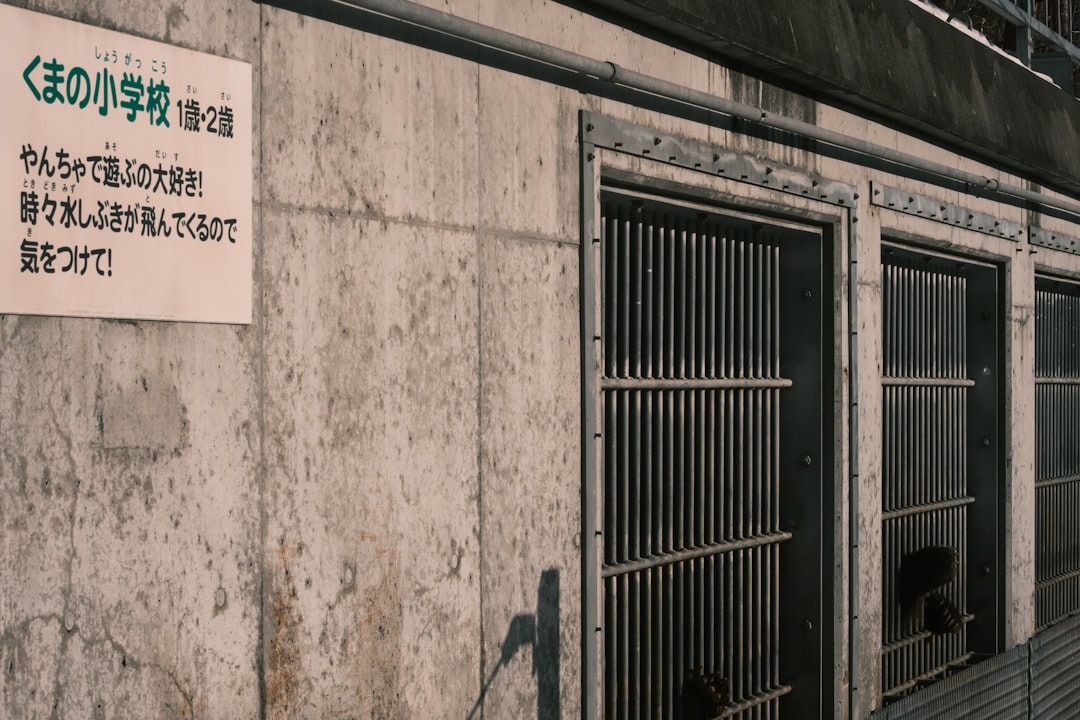

Engage prospects with a scan and streamline customer engagement with FREE QR code marketing tools by Sona – no strings attached!
Create a Free QR CodeFree consultation

No commitment

Engage prospects with a scan and streamline customer engagement with FREE QR code marketing tools by Sona – no strings attached!
Create a Free QR CodeFree consultation

No commitment
In today’s digitally driven world, QR codes have evolved from a novelty to a strategic powerhouse in bridging offline engagement with online action. For flea extermination services, QR codes represent an efficient, frictionless, and surprisingly effective way to boost lead generation, educate customers, and deliver instant access to vital resources—all without requiring an app download or complex setup. Explore practical tactics in QR codes in marketing.
Missed opportunities remain one of the biggest frustrations for flea extermination companies. It is common for high-value prospects to engage with print media or service touchpoints, yet never be captured in the CRM because they never submit a form or make a call. QR codes now enable businesses to identify and connect with these anonymous, high-intent prospects, transforming each physical interaction into a data-backed lead. Tie print to measurable outcomes with direct mail.
In a market where customer experience, trust, and quick access to information are paramount, QR codes provide a seamless onramp from printed marketing such as service flyers, appointment cards, or treatment instructions directly to digital content such as reviews, educational guides, or instant quote requests. By embedding these touchpoints across every stage of the customer journey, flea extermination services can modernize outdated workflows, enhance engagement, and improve visibility on ROI. Extend print with scannable brochures and streamline social proof capture using a Google reviews QR.

One persistent pain point for flea extermination services is the inability to reach interested customers who interact with offline or print materials without taking further action. Yard signs, door hangers, and mailers may capture attention, but the absence of an immediate digital next step allows interest to dissipate. Traditional methods miss out on tracking these signals, letting valuable opportunities go unaddressed.
QR codes bridge the gap between physical touchpoints such as paper forms, printed brochures, and service invoices and digital outcomes that matter: faster quote requests, higher appointment bookings, easier review collection, and instant access to pet-safety resources. With QR-enabled placements, every scan becomes a measurable signal that can trigger automated follow-ups, educational content, or real-time booking options. The result is a connected journey that honors customer preferences while giving your team data to act on.
Here is how to do it effectively:
These tactics empower marketing and service teams to eliminate paper-heavy processes, ensure customers find the right resources, and transform every scan into a qualified lead or informed customer. Modern platforms can automate tracking, manage multiple codes at scale, and sync real-time scan data straight to your CRM so no warm interest slips through the cracks. See Sona’s blog post Integrate Sona with HubSpot CRM.

Core marketing headaches like low inquiry rates from offline campaigns, lack of transparency on who is engaged, and slow customer response persist in the flea extermination sector. Teams struggle to attribute spend to outcomes across mailers, signage, and community events. Paper handouts often go unread, and paper forms are often incomplete or lost. QR codes address these realities with a practical, measurable bridge from offline to online.
For flea extermination services, the value is both operational and strategic. Customers dealing with fleas often feel urgency, sensitivity to pet safety, and a desire for trustworthy information. QR codes let you deliver the right resource in the right moment: a scan from a door hanger can open a booking form, a scan from a technician’s leave-behind can open aftercare instructions, and a scan from a yard sign can open a seasonal discount. Behind the scenes, each scan becomes a data point you can use to attribute revenue, refine placements, and prioritize follow-ups.
QR codes solve these specific challenges:
In short, QR codes make it possible for flea extermination businesses to eliminate blind spots, prove which offline efforts work, and deliver fast, pet-safe customer experiences that convert.

Flea extermination teams often rely on a patchwork of contact channels and printed materials that create bottlenecks for customers. QR codes unify these pathways by giving each printed asset a clear, mobile-first destination that matches user intent. The format you choose should reflect the action you want the scanner to take.
Not every use case needs the same QR type. For example, a post-treatment card might require a mobile video library for aftercare, while a booth handout at a pet expo might benefit from a pre-filled SMS inquiry. Choosing the right format ensures less friction, better conversion rates, and cleaner data.
Useful formats for flea extermination services include:
Dynamic QR codes provide marketers in pest control with agility. You can switch destinations seasonally, test pricing pages, highlight fresh review showcases, or rotate between content and booking links without reprinting. A central management platform makes it easy to generate, update, and track these codes from a single dashboard so your team spends less time on logistics and more time on outcomes.

Many pest control companies struggle to connect offline awareness to actual leads. A yard sign might spark interest, yet a homeowner forgets the phone number by the time they reach the house. Door hangers get attention, but no action is taken because the next step is unclear. With QR code-powered placements, every piece of print becomes a measurable gateway that nudges a clear action and captures intent.
Look for moments where your audience is already engaging with your brand in the physical world. Place QR codes where the context of the scan aligns with an action you want: request a quote, book an inspection, watch a quick explainer, or read pet safety guidance. The closer the QR content matches the context, the higher your conversion and the better your data quality.
Deploy QR codes in these high-yield placements:
By embedding QR codes in these placements, flea extermination service companies can systematically identify and nurture otherwise anonymous prospects. Each scan enriches your CRM, closes the attribution loop, and supplies the context needed for tailored follow-up.

Offline interest often fails to translate into digital action. A homeowner reads a brochure but does not type a URL into their phone. A satisfied customer means to leave a review but forgets. QR codes remove these frictions. They shorten the path from curiosity to conversion and reveal which assets and messages create momentum.
For flea extermination providers, three use cases stand out because they align to the most common interactions: requesting quotes, learning about pet-safe solutions, and sharing social proof. Each use case can be tracked and attributed, which makes ongoing optimization straightforward.
Each touchpoint also delivers measurement. You can identify which neighborhoods scanned a seasonal offer, which service lines produce the highest review rates, and which content keeps customers on-page longest. That data feeds iterative improvements across creative, placement, and follow-up.
Every QR scan is a signal: who engaged, in what context, and with what intent. Deploying multiple codes across your touchpoints lets you segment automatically and follow up with precision. Instead of generic nurturing, you can tailor messages based on whether the user scanned for emergency service, prevention tips, or aftercare support.
Flea extermination services benefit especially from intent-based segmentation because needs differ widely. A landlord managing multi-unit housing has different concerns than a pet owner in a single-family home. A renter who scanned a door hanger on the weekend likely has a different urgency than a homeowner who scanned a leave-behind after treatment.
Here is how to structure a retargeting-ready QR program:
With Sona QR, every code becomes a smart entry point to your funnel. You can retarget based on behavior and context rather than assumptions, keeping relevant messages in front of the right people at the right moment. Strengthen your approach with Sona’s strategic perspective on intent data.
As print and digital continue to converge, QR codes serve as connective tissue that unifies the experience and the data. They let you keep using proven physical channels while unlocking real-time attribution and automated follow-ups. The result is a true offline-to-online engine that supports awareness, consideration, and conversion.
For flea extermination services, this integration is especially valuable because so many interactions begin in the neighborhood: a lawn sign, a door hanger, a branded vehicle, a pet expo booth. QR codes let each of these surfaces capture demand at the source, while your CRM and marketing tools orchestrate the digital journey that follows.
Examples of how QR codes enhance your broader marketing strategy:
QR codes serve as the offline onramp to your digital marketing engine. With a centralized platform like Sona QR, you can manage all codes in one place, monitor performance by channel, and sync scan data to your CRM and ad tools for continuous optimization.
A systematic approach to QR implementation prevents one-size-fits-all deployments that produce weak data and limited optimization. Clarify your goals, choose the right code type, design with scannability in mind, deploy across the right placements, and create a plan to measure and iterate.
When you instrument your campaigns intentionally, QR codes become a performance lever. Each scan gives you a mini-experiment across creative, message, and placement that informs the next iteration. Purpose-built platforms can help automate this cycle so your team spends time on insights rather than spreadsheets.
Define the business outcome. Focus on known gaps where offline engagement is unmeasured: emergency quote requests from yard signs, pet-safe treatment education from leave-behinds, or review collection after service. Clarity on the outcome will guide code type, placement, and destination choices.
Select static codes for fixed info such as a PDF prep checklist. Choose dynamic codes for updatable promotions, testable landing pages, and trackable campaigns. Dynamic codes support A/B testing, retargeting, and destination changes without reprinting.
Design for scannability and brand clarity. Add a concise, benefit-focused CTA near the code such as “Scan to Book Your Flea Inspection.” Test across devices, distances, and lighting conditions. Ensure the landing page is mobile-first and loads quickly.
Match placement to customer context and urgency. Yard signs and vehicle wraps capture on-the-go prospects. Appointment cards and post-treatment labels support aftercare and reviews. Event signage captures top-of-funnel interest that would otherwise be forgotten.
Monitor scan volume, engagement, and conversion. Add UTM parameters to differentiate placements. Use analytics to surface top-performing creatives and channels. Reallocate spend toward high-yield assets and test new destinations or offers to improve scan-to-book rates.
For flea extermination services, tying offline activity to revenue is notoriously difficult. Traditional print offers little to no attribution, which makes it hard to defend budgets or double down on what works. Without clear data, teams overinvest in awareness and underinvest in the channels that actually convert. Get the framework in Sona’s blog on offline attribution.
QR codes introduce a measurable pathway for every physical touchpoint. Each scan can capture device, time, location, and source, which builds a rich context for performance evaluation. You can see whether a door hanger in one neighborhood generates more inspections than a yard sign in another, or whether your seasonal mailer drives more review submissions after treatment.
With a modern analytics stack:
For example, a surge in scans from door hangers in a high-churn neighborhood could correlate to a spike in bookings within 48 hours. By tagging those scans and syncing them to your CRM, you can attribute revenue to the mailer route, refine your targeting, and proactively follow up in adjacent areas. Platforms like Sona QR’s use case library capture real-world engagement and, with Sona, turn that engagement into revenue insights that fuel performance marketing strategies.
Even strong campaigns can suffer if codes are reused across placements, if content is generic, or if follow-ups stop at the scan. Avoid these pitfalls by building a program that is segmented, personalized, and automated. Doing so maximizes ROI and reveals growth levers you can scale.
Train technicians and frontline staff to promote QR benefits in the field. A quick reminder during service to scan the aftercare code or review link can significantly raise engagement. Pair this with analytics reviews to identify underperforming placements and rework or retire them quickly.
Automation platforms like Sona QR remove the manual burden of code management, reporting, and follow-up. You can generate and track your first codes in minutes and integrate with tools you already use so scan events trigger workflows, alerts, or lead scoring in real time. Consider durable placements like stickers and labels to keep key resources one scan away. Start creating QR codes for free at Sona QR.
Seeing how peers deploy QR codes helps translate strategy into action. The most effective campaigns embrace the customer’s context, reduce friction to the next step, and measure everything so improvements are evident across cycles.
Below are examples that highlight different objectives: lead capture, education, review generation, and community engagement. Consider how each might apply to your service model and local market dynamics.
Each tactic turns anonymous engagement into measurable signals. You will not only increase bookings and retention but also gain the data to prioritize the right routes, offers, and creative.
Execution determines results. The same code that excels on a door hanger may underperform on a vehicle if the size or contrast is wrong. The right code type without a compelling CTA can still fail to convert. Mastering fundamentals across design, placement, and follow-up can lift performance across every asset.
Avoid common pitfalls: using one generic code everywhere, sending scanners to slow or non-mobile pages, and failing to refresh dynamic destinations. Layer quality controls into your process so issues are caught during testing rather than on the street.
Specialized management platforms mitigate risk with built-in QR quality checks, dynamic destination control, and actionable reports. This lets your team focus on creating valuable content and high-impact offers while the system handles tracking and optimization at scale.
QR codes are not just about engagement. They are a gateway to measurable outcomes. For flea extermination teams, tracking scans and attributing real business results is critical to proving impact and optimizing spend. Knowing someone scanned a code is useful, but without understanding how that engagement influenced the buyer journey you lack a path to optimization. You need to see if a scan drove a form fill, a call, a booked inspection, or a review.
That is where platforms like Sona QR and Sona.com come in. Sona QR captures the scan-level details you need and Sona.com connects those interactions to revenue through identity resolution and multi-touch attribution. Together, they turn your offline signals into a performance marketing system.
Sona QR captures real-world engagement. Sona turns that engagement into insights you can act on, helping you connect scans to revenue and make QR codes part of your performance marketing strategy.
To get more value from your QR code campaigns, focus on segmentation, clarity, and automation. Tailor your codes and destinations to the media and the moment, and ensure each scan triggers a helpful next step. The right mix of placements and follow-ups will compound results over time.
Two creative deployment examples for this vertical: add a QR code to invoices that offers a discounted preventive follow-up three months later, and place a QR sticker inside pet carriers with emergency flea treatment guidance and a fast-track booking link for new pet adopters.
You can generate and track your first QR codes for free with Sona QR. Start creating QR codes for free at Sona QR.
Creativity paired with measurement is a powerful combination. These ideas demonstrate how to turn physical presence into digital momentum while capturing the data you need to optimize. Borrow the concepts and adapt them to your brand’s style and service model.
Think in terms of context. What does the audience need in that moment? A homeowner who just scheduled a service needs prep steps. A passerby who saw your vehicle needs a fast path to a quote. A satisfied customer needs a low-friction way to share a review. Design the QR experience to meet that immediate need.
These approaches not only generate leads and reviews but also deepen trust. Since you can attribute outcomes back to specific codes and placements, you will learn quickly where to invest and how to scale.
The difference between a QR program that plateaus and one that scales is usually operational discipline. The best teams treat QR as a system: they track, attribute, test, and refresh content frequently. They also ensure that every scan lands on a fast, relevant, mobile-optimized destination.
Beware of pitfalls that depress performance: too-small codes on moving vehicles, cluttered backgrounds that compromise scannability, vague CTAs, and landing pages that require excessive form fields. Anticipate these risks and build checks into your workflow.
Specialized platforms simplify execution with code management, dynamic routing, and analytics dashboards. This foundation gives your team the confidence to scale QR usage across more assets without losing visibility or control.
QR codes have transformed from a simple tech convenience into a core component of customer engagement for flea extermination services. By turning every physical surface into a digital entry point, providers create moments of instant engagement, deliver pet-safe education, and drive measurable business growth that is visible in your CRM and analytics.
Key advantages include:
Adopting an integrated QR strategy lets every scan, action, and result be captured. You can connect with high-value prospects at the source of intent, optimize spend with confidence, and scale impact across peak seasons. With Sona QR, you have everything you need to generate codes, manage destinations, monitor performance, and sync engagement data to your CRM and ad platforms.
QR codes are redefining what is possible in flea extermination services. By being deliberate about placement, segmentation, and ongoing tracking, your business can stand out in a competitive market. Get started by creating a few high-impact codes for your most visible assets, measure what happens, and iterate toward the mix that drives the most booked inspections and delighted customers.
QR codes have transformed flea extermination services from traditional, static outreach into dynamic, measurable growth opportunities. Whether it’s streamlining customer acquisition, enhancing client education, or providing instant access to treatment details and follow-up care, QR codes replace cumbersome manual processes with quick, mobile-friendly actions that capture real-time engagement data—turning every interaction into a powerful conversion tool.
Imagine giving customers immediate access to personalized flea control tips, service schedules, and exclusive offers—all tracked and updated effortlessly. With Sona QR, you can create dynamic, trackable QR codes in seconds, update campaigns instantly without reprinting, and connect every scan directly to your business growth. No missed leads, no wasted marketing—just smarter, more effective flea extermination services.
Start for free with Sona QR today and turn every scan into a loyal customer, a booked appointment, or a satisfied referral.
Look for services that provide quick access to pet-safe treatment information, easy online booking, transparent pricing, and strong customer reviews, which can be accessed through QR codes on marketing materials.
Effective flea removal includes eco-friendly treatments, thorough cleaning guided by pet-safe aftercare instructions, and following vet-approved preparation steps, which can be accessed via QR codes on treatment leave-behinds.
Costs vary by service and location, but flea extermination companies often provide instant quotes through mobile-optimized forms accessible via QR codes on flyers, yard signs, or mailers.
Common signs include pets scratching frequently, visible fleas or flea dirt on pets, and bites on family members; educational resources explaining these signs are often linked through QR codes on brochures or service materials.
Prevention involves following pet-safe cleaning and aftercare instructions, maintaining regular treatments, and accessing seasonal prevention guides often provided via QR codes on aftercare cards or service invoices.
Use Sona QR's trackable codes to improve customer acquisition and engagement today.
Create Your FREE Trackable QR Code in SecondsJoin results-focused teams combining Sona Platform automation with advanced Google Ads strategies to scale lead generation

Connect your existing CRM

Free Account Enrichment

No setup fees
No commitment required

Free consultation

Get a custom Google Ads roadmap for your business






Launch campaigns that generate qualified leads in 30 days or less.
